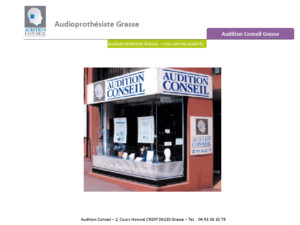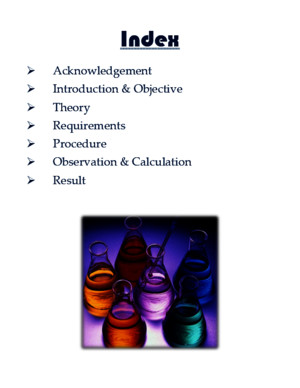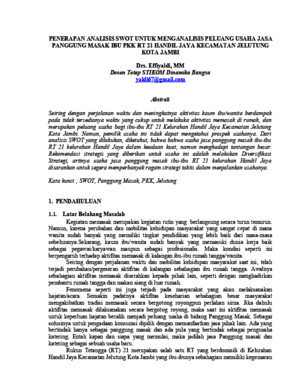A Study of the Impact of Social Media on Consumers
There is document - A Study of the Impact of Social Media on Consumers available here for reading and downloading. Use the download button below or simple online reader.
The file extension - PDF and ranks to the Instruction manuals category.
Tags
Related
Comments
Log in to leave a message!
Description
Download A Study of the Impact of Social Media on Consumers
Transcripts
International Journal of Market Research Vol 56 Issue 3 A study of the impact of social media on consumers M Nick Hajli Birkbeck, University of London Social media have provided new opportunities to consumers to engage in social interaction on the internet Consumers use social media, such as online communities, to generate content and to network with other users The study of social media can also identify the advantages to be gained by business A multidisciplinary model, building on the technology acceptance model and relevant literature on trust and social media, has been devised The model has been validated by SEM-PLS, demonstrating the role of social media in the development of e-commerce into social commerce The data emerging from a survey show how social media facilitate the social interaction of consumers, leading to increased trust and intention to buy The results also show that trust has a significant direct effect on intention to buy The perceived usefulness (PU) of a site is also identified as a contributory factor At the end of the paper, the author discusses the results, along with implications, limitations and recommended future research directions Introduction The advancements in the internet in recent years have made new systems available to business: social media such as online communities being a good example (Lu et al 2010) The general availability of the internet has given individuals the opportunity to use social media, from email to Twitter and Facebook, and to interact without the need for physical meetings (Gruzd et al 2011) This has been facilitated by Web 20 applications Web 20 is a new advancement, which has transferred the internet to a social environment by introducing social media, where individuals can interact and generate content online (Lai Turban 2008) Web 20 has emerged to give users easier interconnectivity and participation on the web (Mueller et al 2011) With the rise of social media and online Received (in revised form): 25 January 2013 © 2014 The Market Research Society DOI: 102501 /UM R-2014-025 387 A study of the impact of social media on consumers communities, individuals can easily share and access information (Chen et al 2011a) Online communities and social networking sites (SNSs) are an effective web technology for social interactions and sharing information (Lu Hsiao 2010) SNSs take centre-stage in e-commerce in the current environment (Fue et al 2009), where consumers make social connections and participate in cyberspace (Mueller et al 2011) Today’s consumers have access to many different sources of information and experiences, which have been facilitated by other customers’ information and recommendations (Senecal Nantel 2004) This is an important point as customer involvement through social media is a key factor in marketing (Do-Hyung et al 2007)Social media offer different values to firms, such as enhanced brand popularity (de Vries, Gensler c Leeflang 2012), facilitating word-of-mouth communication (Chen et al 2011b), increasing sales (Agnihotri et al 2012), sharing information in a business context (Lu Hsiao 2010) and generating social support for consumers (Ali 2011; Ballantine Stephenson 2011) In addition, the networking of individuals through social media provides shared values, leading to a positive impact on trust (Wu et al 2010) Today, with the expansion of social media and SNSs, a study of consumer behaviour on these platforms is a research agenda (Liang Turban 2011) because social media are likely to develop marketing strategies in firms through trust-building mechanisms and affecting customers’ intention to buy online productsThe main thrust of this paper focuses on examining the role of social factors on trust, which can influence an individual’s intention to buy An understanding of this issue can aid in identifying factors that establish trust and social commerce intention through SNSs This paper has four objectives First, the study examines how social media - namely online forums, communities, ratings and reviews - can influence trust in e-commerce Second, it looks at the relationship between trust and intention to buy Third, this research examines the relationship between trust and perceived usefulness (PU) of a site on intention to buy In conclusion, it examines the direct and indirect influence of social media on trust and intention to buy To these ends, the study presents the following questions1 Do social media in social networking sites affect the user’s trust?2 Do PU and trust affect the user’s intention to buy?3 Which factors (PU or trust?) are more important in determining the user’s intention to buy? 388 International Journal of Market Research Vol 56 Issue 3 To answer these questions, the study borrows from technology acceptance model (TAM) constructs, along with concepts of trust, social media and social support to build up an interdisciplinary model The purpose of this research is to investigate the role of social media and how they can influence the consumer’s intention to buy and impact on a user’s trust in a social commerce environmentThe paper is organised as follows First, a literature review is provided to identify the issues and gaps in the current literature that have driven this study The next section provides the research model and hypotheses The paper continues with research methodology and the structural model Finally, theoretical and managerial implications for the study are presented, along with limitations, future research directions and conclusions Literature review and theoretical background With the advances in the internet and the emergence of Web 20, the interconnectivity between individuals has expanded on the internet This development enables customers and businesses to collaborate on the internet (Füller et al 2009) This has emerged through social media, which enable consumers to generate content and have social interactions online via social platforms There are a number of social platforms that have facilitated information sharing For instance, Wikipedia, a free online encyclopaedia, is one of the most popular platforms and has the facility for users to collaborate on information sharing (Chen et al 2011a) Other platforms with the ability to generate reviews and ratings, such as Amazon, com, enable customers to review and rate products In addition, members of these platforms are cooperatively interdependent (Chris et al 2008) By using social media, consumers can create content and offer valuable advice to others (Füller et al 2009) This new development has seen online communities and an electronic network of individuals emerge on social platforms where members share information globally and quickly (Molly McLure Samer 2005)With the rise in social networks, a new era of content creation has emerged, where individuals can easily share experiences and information with other users (Chen et al 2011a) The next generation of online businesses will be based on communities - a good tool for new customer attraction (Bagozzi Dholakia 2002; Ridings Gefen 2004) Online communities offer an opportunity to organisations to have a better customer relationship management system (Ridings Gefen 2004), for instance, giving rise to a new development where businesses can improve 389
Recommended















